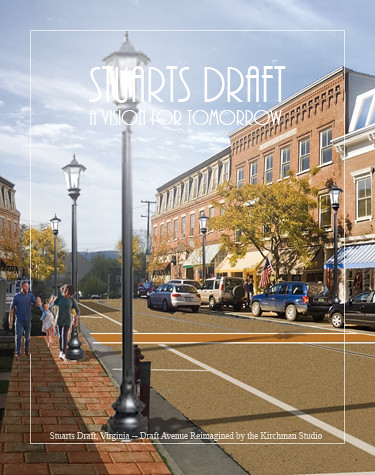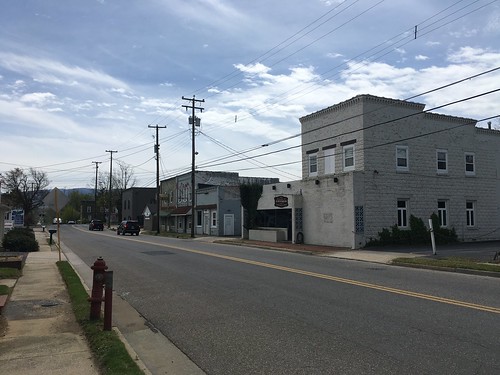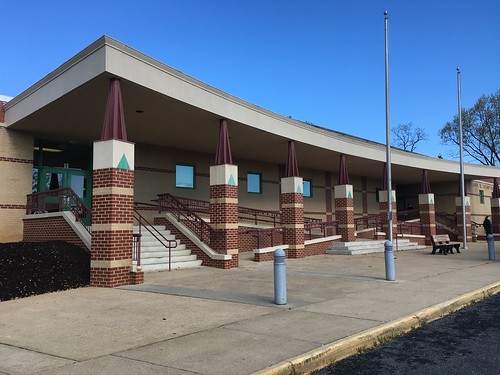
“A prophet is not without honour, but in his own country”
Creative Vision and its Persecution
Years ago I worked as a drafter in a design office and my primary task besides creating renderings was to draw site plans for new buildings. It inevitably was an exercise called “cramming the site” and “counting parking spaces.” Codes required a specific number of spaces for each type of business or residential complex as well as deceleration lanes and other road features. Add the required runoff retention ponds and the proposed building inevitably stood in a landscape of asphalt and curb and gutter. I would often wonder to myself : “there has to be a better way.” Eventually I discovered the writings of Charles Marohn, an engineer who advocated a more pedestrian and community friendly approach to traffic design. He envisioned walkable town centers – friendly to pedestrians and sensitive to their town’s fabric and culture.
He created a lively discussion. You might not always agree with him, but his mission was – and still is – a noble one. Unfortunately he has, like many who challenge the prevailing narrative, acquired enemies who want to silence him. This problem is not reserved to engineering and infrastructure policy. Medical professionals who challenge the ‘standard narrative’ are also targeted for professional discrediting. Witness the purge on social media of all things Hydroxychloroquine as a treatment for COVID-19. In spite of well-documented results those doctors have been slammed by a couple of ‘studies’ that attempt to ‘prove’ hydroxychloroquine ineffective. The problem is that when those studies are shown to have flaws (such as the drug being administered very late in severe cases) the narrative is still preserved.
When Edward Jenner discovered that cowpox exposure would render a person immune to smallpox, the medical community lauded him, right? WRONG! He was soundly dismissed at first. Critics even published cartoons of people growing cow heads as a result of being ‘vaccinated.’ Did you know that the word ‘vaccinate’ has at its root the Latin word for ‘COW?’ Well, innovation and problem solving require people to think outside the box – and open discussion. We can’t limit the creative ideas from being debated. Why is it we assume the only answer to COVID-19 is a ‘VACCINE?’ – an idea promoted by Bill Gates, a guy who can’t even keep a virus out of his own operating system! His vaccination programs in developing nations have actually lead to the deaths of vaccinated children. Unfortunately the human experience involves unknown risks and the overcoming of those we can. In this pursuit, no one is served well by limiting discussion.
The Drug that Cracked COVID
[click to read]
By Michael Capuzzo
On the morning of December 18, 2020, as the newscaster announced a grim New York record for COVID-19 deaths and the weatherman predicted a white Christmas for Buffalo, Judy Smentkiewicz drove home from a house cleaning job, excited about the holiday. But her back hurt bad, and she was unusually exhausted. “I thought it was my age, being eighty years old, working every day,” she said. “I never thought about COVID.” Judy’s small house in Cheektowaga, just east of Buffalo, was all set for Christmas. Daughter Michelle, who lives a few miles away and talks to her mother five times a day, put up the tree and the decorations and the snowman on the front lawn of grandma’s house with her daughter until it looked like a scene from It’s a Wonderful Life. Son Michael came up from Florida with his wife Haley to help his sister cook the family Christmas Eve dinner, usually for twenty-five, but now just immediate family with “COVID shaping everything,” Michael said. Michael, fifty-seven, hasn’t lived in Buffalo for close to thirty years, and relishes the trip home. (read more)
Charles Marohn’s Story
[click to read]
I'm pushing for safe streets. Some engineers want me to go away. For the second time, a fellow professional engineer has filed a complaint against me with the state licensing board. For the second time, my license to practice engineering is now under formal review. For the second time, I am threatened with losing my professional licensure and, with it, the credentials that give me the opportunity to pursue a career in engineering. (read more)
Building on the Past
Revitalizing the Core of Small Towns
We are now seeing the value of small spaces that house commerce and the folly of centralizing everything. In the past, we were indeed a nation of villages. ‘Economies of Scale’ changed all that. But now, as whole business areas are deserted in our present crisis we see the value of relatively remote centers like our grandparents knew. Fortunately much of that infrastructure still is in place and could be revitalized with some help in zoning policies and tax deferral for small businesses that want to come in to these places.
Initially there could be a renewed filling of the existing buildings followed by a process of infill on these existing town centers to provide medical and professional offices, loft residences and a vibrant culture to support a variety of local businesses. Will it work? It did in our little town of Crozet. The center of the town was indeed walk-able. Residents of the local retirement home patronized the local lunch counter. Indeed, I learned a lot listening to an older gentleman who was a regular there. He had been a radioman on a B-24 Liberator in the Pacific Theatre and had a lot of good stories to tell. Somewhere between there and our community meetings we came up with the idea for the Crozet Trestle Mural. Small towns can incubate big ideas.
At the time I lived there, a short walk (or run) would take you to open country. There was a rocky field near Mint Springs Park that always tugged at my heart. Finally I realized that it was very much like the Bavarian countryside where my ancestors came from. Preserving such treasures and making the most of them would make sense on so many levels.

Draft Avenue, Stuart's Draft, Virginia as it is today.


Draft Avenue Re-imagined.
Effective Quarantines and Strong Towns
[click to read]
By Spencer Gardner in Strong Towns
The images in this article are related and I’m going to explain how, but first I want to start with a personal anecdote. My siblings and I have always loved playing with dominoes to create intricate chains that snake around the house. After setting up the course, we would watch as the first domino toppled into the second, creating a chain reaction that was mesmerizing. One thing we learned quickly through our domino creations was the importance of introducing regular breaks in the chain. The purpose of these was to isolate the effect of an accidental fallen domino or an ill-placed footstep. Without breaks, a single stray piece could completely destroy our creation prematurely. Only after each section was complete would we bridge the gaps to unify the whole. This same thinking is present in many systems. Firefighters use firebreaks to slow the spread of wildfires. Builders use firewalls to prevent or slow the spread of a building fire. You are likely familiar with this principle in your own life in some form. (read more)
Fostering Infill
[click to read]
By Spencer Gardner in Strong Towns
Infill development—building on unused or underutilized land within the existing urban footprint—meets many of the goals a strong town should have. Because these developments make use of existing infrastructure, they represent added wealth without the future liabilities of infrastructure replacement. There are many other benefits too: added vibrancy, more housing options at more affordable prices, and a lower environmental impact. (read more)
Infill in Rural Areas
Many rural areas are dotted with older towns that, while they are grandfathered in, cannot be improved by existing codes. They languish in a sort of limbo as a few businesses do occupy them ‘by right.’ Unfortunately there are many more vacancies as there is not the culture or traffic to support much more than is alread

Finley Memorial Presbyterian Church. Photo by Bob Kirchman.
A Vision for Stuarts Draft 2039
Today the Village of Stuarts Draft is a place born of agriculture with a close-knit community, strong industry supported by hard-working families, ample natural resources, and numerous recreational possibilities.
Stuarts Draft’s future should be marked by a theme of cohesive planning and living, connected by a walkable mixed-use path to its residential, recreational, and urban areas. Stuarts Draft will continue to be visibly surrounded by pastoral and rural views as it remains framed by agricultural industry. Its good wage-producing employment centers continue to be sheltered from the main thoroughfares, with accessible, clean business centers providing a level of continuity in appearance and location. Its old downtown is distinguished by its quaint appearance, maintaining the flavor of its historic roots, and remaining mixed-use in nature.
Architectural endeavors continue to add to the quaint and historic feeling of the community in all areas of building, but allow for modern convenience. Safe pedestrian and bicycle facilities are a priority in this nature-driven community where new development is concerned and when connecting existing areas of recreation, business, and living.

Guy K. Stump Elementary School on Draft Avenue. Photo by Bob Kirchman.
Quality public centers include excellent schools, a library, and facilities that double as community centers, emergency services, and which have enhanced “green” features. Attractive recreation facilities which appeal to a wide range of users have and will continue to be added to the network that ties the community together.” – Stuarts Draft Small Area Plan|2019-2039, Timmons Group [1.]

House on Draft Avenue. Photo by Bob Kirchman.
